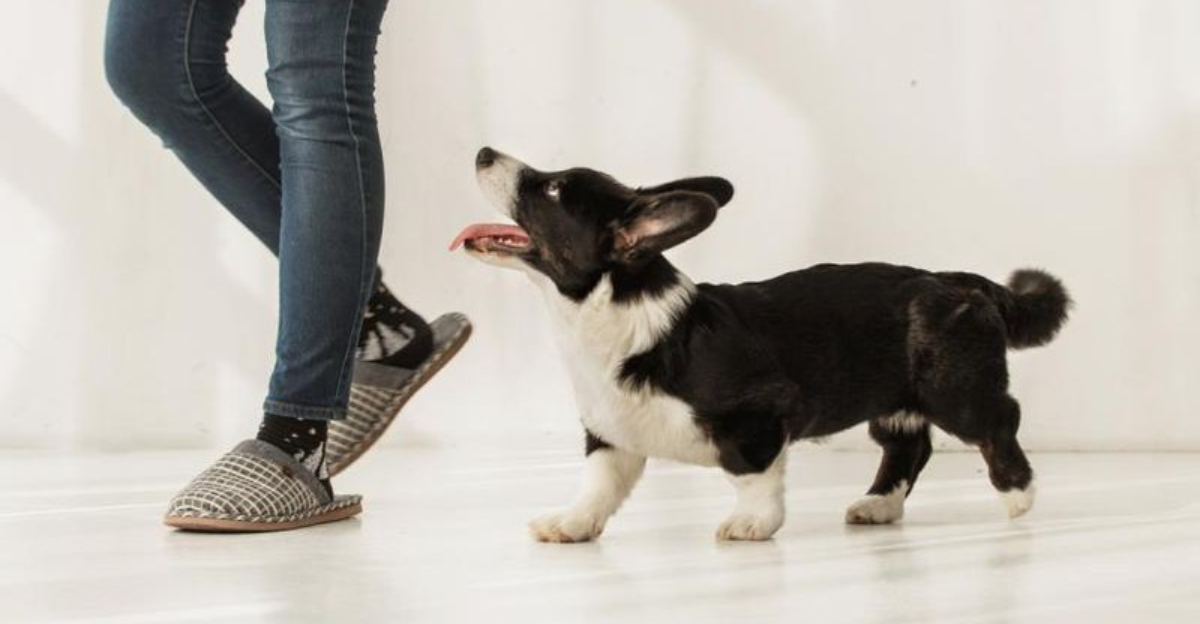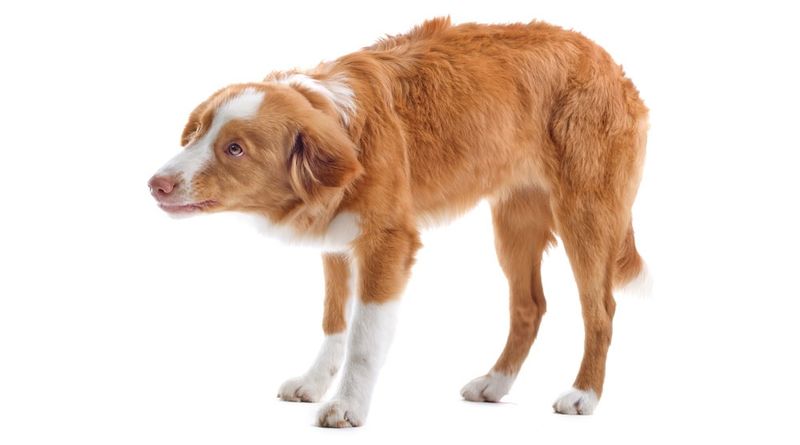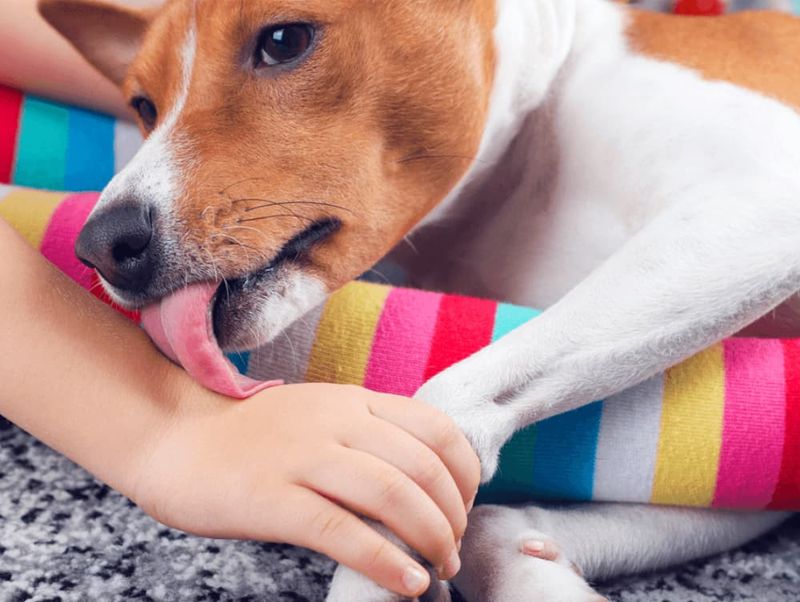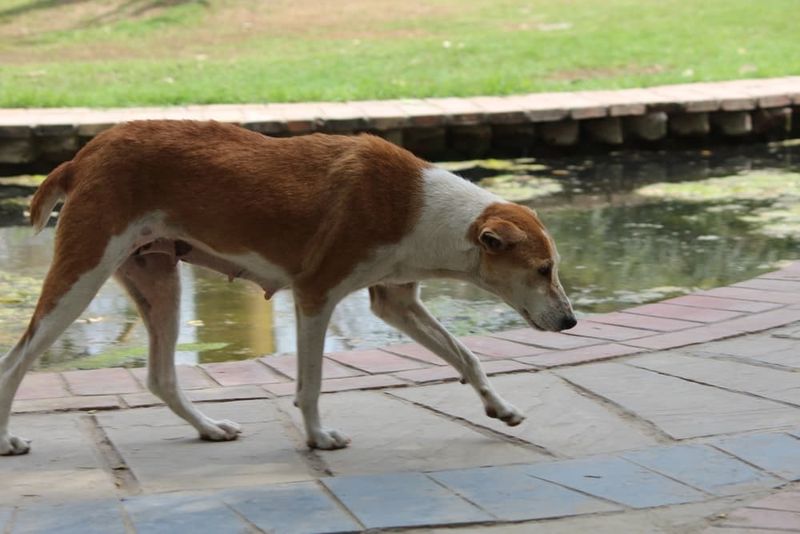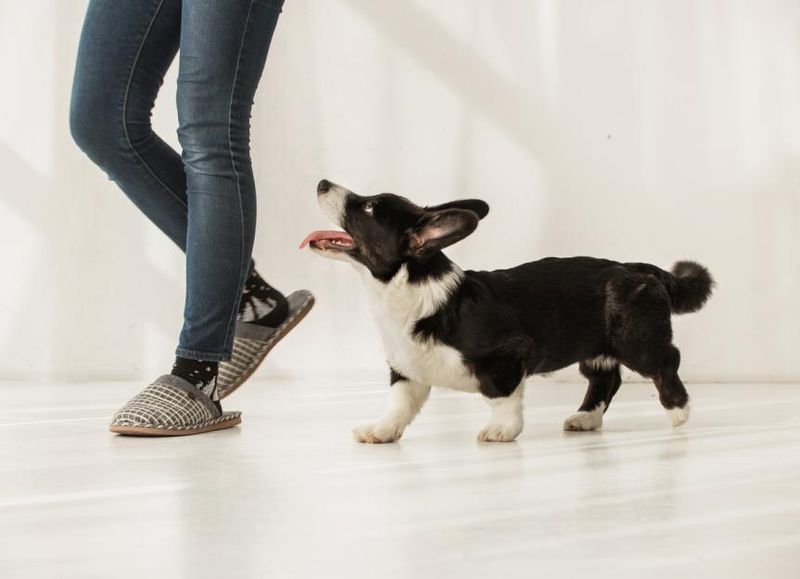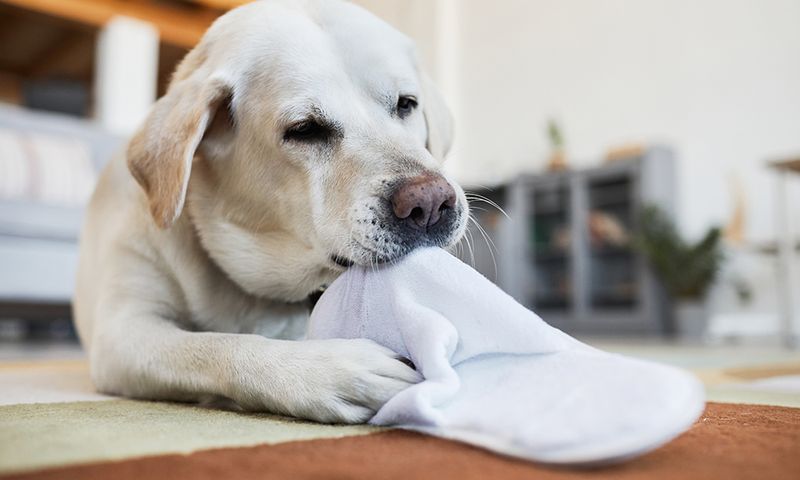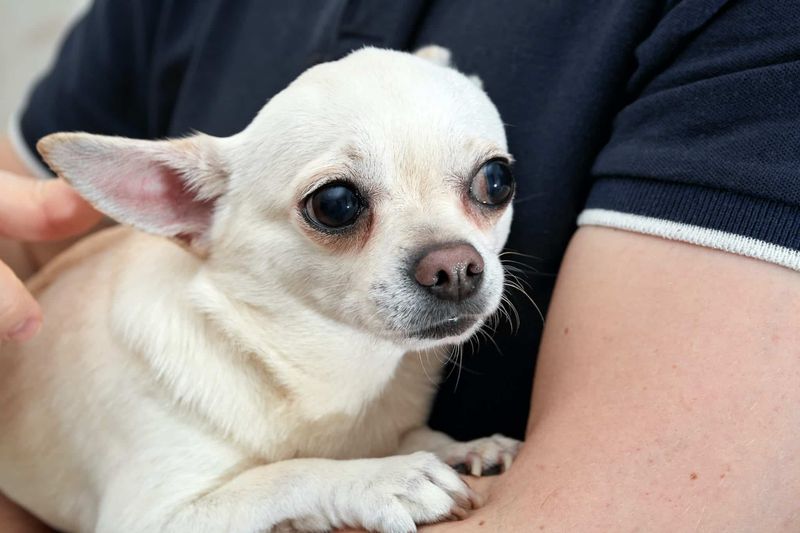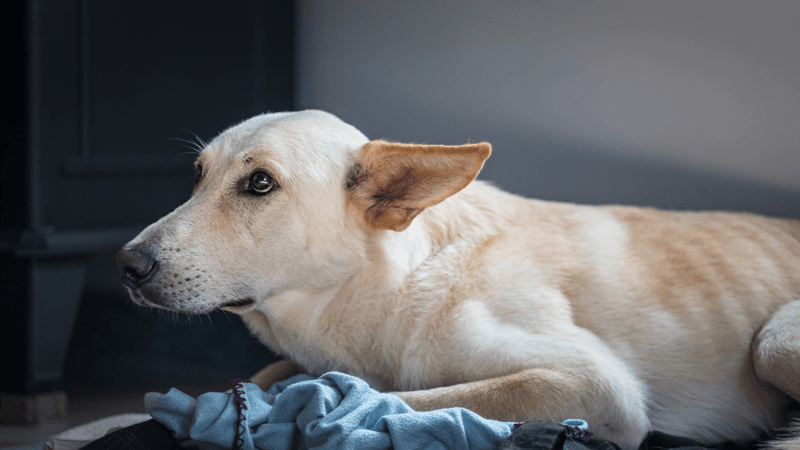Dogs have an uncanny ability to sense human emotions, particularly anxiety. These loyal companions often respond in subtle and not-so-subtle ways when their humans are stressed or anxious. Understanding these behaviors can deepen the bond between you and your canine friend, enhancing communication and mutual support.
Tail Tucking
Every dog owner knows the sight of a tail tucked between legs. This behavior is not just a sign of fear or submission but also indicates anxiety in their human. When your dog tucks its tail, it might be mirroring your emotional state. Some dogs exhibit this behavior when they sense tension in the atmosphere. It’s their way of showing empathy and concern, reflecting your unease. Interestingly, in the wild, dogs use tail tucking as a way to avoid conflict and show submission. This evolutionary trait has carried over into domestic life, highlighting the deep connection between humans and dogs.
Excessive Licking
With an innocent look and a wagging tail, dogs often resort to excessive licking as a sign of anxiety. This behavior is a self-soothing mechanism akin to humans biting their nails. When you see your furry friend licking your hand or even themselves too frequently, it’s usually because they’ve picked up on your stress. The act of licking releases endorphins in dogs, calming them down. Historically, licking has been a grooming and bonding behavior among canines, and this trait has adapted to help them cope with anxiety in their human counterparts.
Yawning
It might surprise you to know that yawning is not just a sign of sleepiness in dogs. When your dog yawns more than usual around you, it may be mimicking your anxiety. This empathetic behavior occurs because dogs are highly attuned to their owners’ emotional states. In the animal kingdom, yawning can also be a signal of stress or uncertainty. By yawning, your dog might be trying to alleviate tension, both for you and themselves. This unique form of communication strengthens the emotional bond between you and your pet, showcasing their incredible emotional intelligence.
Pacing
Pacing is a classic sign of unease in both humans and dogs. When your furry friend starts walking back and forth, it might be echoing your restless energy. Dogs pace when they sense something is off, and this physical activity allows them to process their anxiety. This behavior is akin to humans tapping their feet or fidgeting. In evolutionary terms, pacing was a way for animals to stay alert and ready for any potential threats. Today, it’s a clear indication that your dog is in tune with your emotional state, reflecting your inner turmoil.
Whining
Whining is a vocal cue that indicates a dog’s responsiveness to your emotions. When your dog whines, it might be responding to your anxiety. This behavior acts as a plea for reassurance and comfort. Dogs are like emotional sponges, keenly aware of their humans’ feelings. It’s not uncommon for them to whine more when they pick up on stress signals. In the wild, whining among pack animals was a way to maintain harmony and express needs. In your home, it becomes a touching reminder of your dog’s empathy and desire to support you through tough times.
Hiding
Dogs often seek solace in hiding when they sense anxiety. This behavior is reminiscent of their ancestors wanting to retreat to a safe spot when feeling threatened. If your dog suddenly disappears behind furniture or into another room, it might be reacting to your stress. The act of hiding provides them with a comforting space to process their feelings. This instinctual behavior is deeply rooted in their survival mechanisms, and it reflects how in tune they are with your emotional landscape. It’s a gentle reminder of the bond and trust they place in you.
Following Closely
Ever notice your dog shadowing you when you’re anxious? This behavior is their way of offering silent support. When they follow closely, it’s a testament to their loyalty and concern. Dogs have evolved to be pack animals, and following is a natural instinct to ensure safety and solidarity. In stressful times, your dog becomes your steadfast companion, mirroring your movements. This behavior not only highlights their empathy but also their desire to be a comforting presence. It’s a heartwarming reminder of the unique bond shared between dogs and their humans.
Destructive Chewing
Destructive chewing often signals anxiety in dogs, especially when picking up on your stress. This behavior is a coping mechanism, providing an outlet for their pent-up energy and emotions. When your dog chews on household items, it’s not just mischief; it’s a response to your emotional cues. Chewing releases dopamine in dogs, helping them feel more relaxed. Historically, dogs have chewed to explore their environment and relieve stress. In your home, this behavior underscores the deep connection they feel with you, reflecting your anxiety in a physical form.
Shaking or Trembling
Shaking or trembling can be a clear signal that your dog senses your anxiety. This behavior is their way of externalizing stress they’ve absorbed from you. When a dog trembles, it might be due to fear or an attempt to release built-up tension. This physical reaction is often seen in dogs who are closely bonded with their humans. In nature, shaking helps animals rid themselves of excess adrenaline after a stressful encounter. At home, it mirrors their awareness of your anxious state, showcasing the profound emotional connection shared between you.
Increased Alertness
Increased alertness is a sign that your dog is on high alert, often due to sensing your anxiety. When their ears perk up and eyes widen, they’re responding to changes in your mood. This heightened state allows them to be more aware of their surroundings, ready to respond to any perceived threat. Dogs have evolved to protect and assist their pack, and this behavior highlights their protective instincts. In modern homes, it translates to a dog that is closely attuned to your emotional state, always ready to offer comfort and support.
Refusal to Eat
Refusal to eat can indicate that your dog is picking up on your anxiety. When a dog suddenly loses interest in food, it may be due to stress. This behavior showcases their sensitivity to your emotional cues. Dogs are known for their hearty appetites, so a refusal to eat is a significant indicator of their emotional state. Historically, animals would stop eating in stressful situations to remain alert and ready to respond. In your home, it reflects the depth of your dog’s connection with you, as they mirror your anxiety through their actions.
Scratching or Digging
Scratching or digging is not just a playful behavior; it can also signal anxiety in dogs. When they sense your stress, they might resort to these actions as a way to cope. This physical activity helps them channel their nervous energy. Dogs have an innate instinct to dig, stemming from their wild ancestors who dug to create shelter or find comfort. At home, this behavior reflects their close bond with you, as they try to manage the tension they’ve picked up. It’s a testament to their deep empathy and connection with their human companions.
Clinginess
Clinginess is a common behavior in dogs when they sense anxiety in their humans. This increased need for closeness is their way of offering comfort and seeking reassurance. When your dog becomes extra clingy, it signals their intuitive nature and desire to be near you. Historically, canine ancestors would stick close to their pack for safety and comfort. In your home, this behavior underscores the depth of their attachment and empathy. It’s a gentle reminder of the unwavering love and support they provide, acting as your emotional anchor during stressful times.
